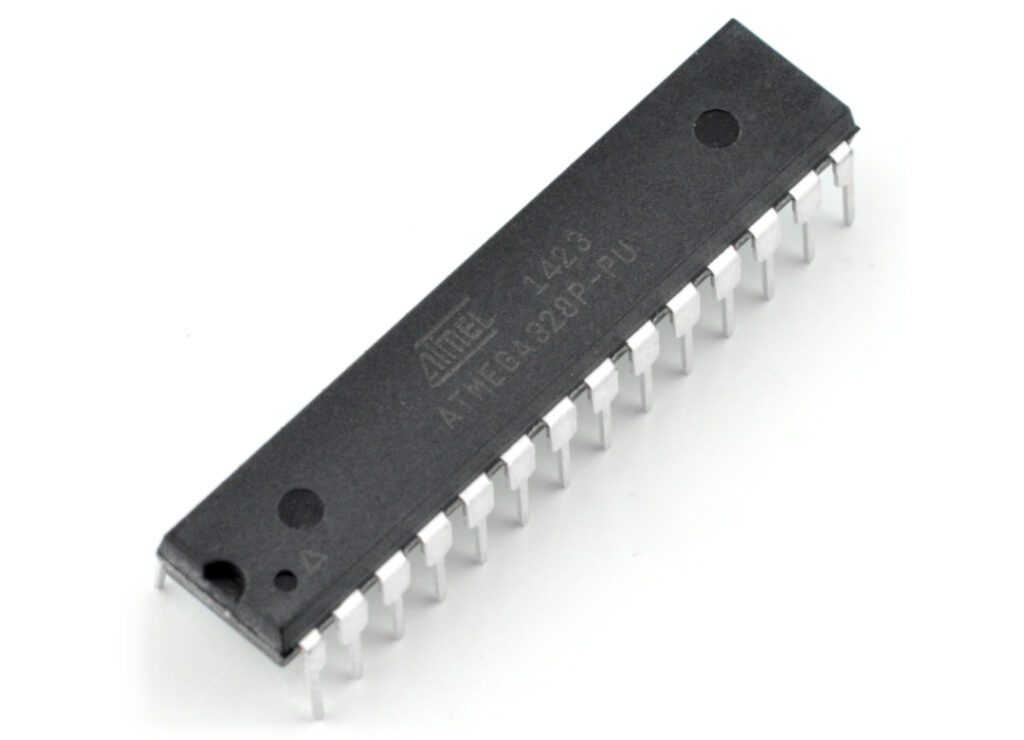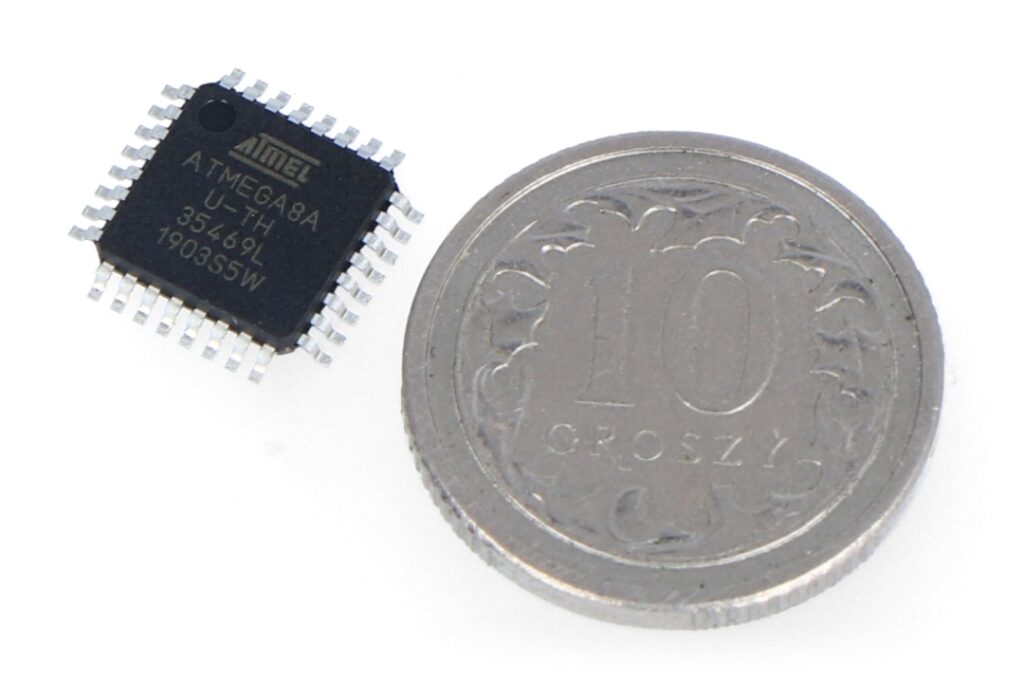Table of Contents:
Do you want to understand the principles behind modern electronics? Start with microcontrollers – small chips that are the brains of many devices. This article will explain to you what microcontrollers are, how they can be programmed and what projects they are used in. Dive into the fascinating world of electronics now! Be sure to read to the end!
Microcontrollers - how are they built?
Microcontrollers are small but powerful chips that are the basis of many technological innovations. The centerpiece of any microcontroller is an integrated circuit (IC), also known as a processor, or in more technological language, a central processing unit (CPU). The CPU is the brain of the microcontroller, controlling all its functions and processes. It allows interpreting and executing software instructions, processing data and managing other components.
Another key component of the microcontroller is memory. It is where programs and data that the CPU must process are stored.
Memory is divided into two main sections: RAM for temporary data storage and ROM for permanent program storage. The microcontroller architecture is designed to maximize CPU and memory efficiency, enabling the device to perform complex tasks quickly and efficiently. These two key components – CPU and memory – work together to form the basis for the ubiquity of microcontrollers in our daily lives.
Programming of microcontrollers - how to get started?
Programming microcontrollers is an extremely important process that allows us to use the full capabilities of these small but powerful chips. Programming is nothing more than instructing a microcontroller what to do, from simple functions like controlling LED displays to complex applications like controlling an entire network of devices in a smart home.
Development environments for microcontrollers vary, but they all have the same basic function – to translate human-understandable programming languages into machine language, which microcontrollers use to execute our commands.
The most common programming languages used to program microcontrollers are C and C++, although many microcontrollers also support Assembler, Java, Python or JavaScript.
The choice of programming language depends on the specific project, the capabilities of the microcontroller and the experience of the programmer. One thing is certain: understanding the process of programming microcontrollers is the next step to fully mastering the fascinating world of electronics!
Examples of microcontroller applications
Examples of applications of microcontrollers demonstrate the diverse capabilities of these small but extremely powerful devices. From home electronics to advanced industrial systems, microcontrollers contribute to making our daily lives or work easier. For example, they are at the heart of all kinds of consumer equipment such as televisions, washing machines and air conditioners, where they control everything from temperature regulation to motor speed control.
One of the most common applications microcontrollers is the control of advanced automated systems. In industry, microcontrollers control advanced manufacturing processes, increase efficiency and productivity. In medicine, microcontrollers are the basis for a variety of medical devices, such as insulin pumps and cardiac monitoring devices.
In telecommunications, microcontrollers enable all sorts of devices, from simple GSM phones to sophisticated telecommunications networks. Such a broad spectrum of applications confirms that microcontrollers are an essential tool in the digital age, multifaceted in their impact on our lives.
News in the microcontroller market
The variety and sophistication of the new microcontrollers is surprising, and the trends we are currently seeing promise even greater possibilities.
Here is an overview of the most important trends that will dominate the market in the near future:
- Miniaturization – microcontrollers are becoming smaller and smaller, allowing them to be widely used in mobile devices;
- greater computing power – new microcontroller models offer increasing computing power while maintaining low power consumption, allowing complex tasks to be completed in less time;
- wireless communication technologies – today, many microcontrollers integrate technologies such as Wi-Fi, Bluetooth and NFC, enabling wireless communication;
- Security – in the era of the Internet of Things, both manufacturers and users of microcontrollers are paying increasing attention to security aspects. Many of the new microcontrollers have built-in security mechanisms, such as encrypted connections and anti-virus protection.
All these trends are in response to the growing demands of users and the development of technology. Modern microcontrollers allow the implementation of increasingly complex projects, providing the opportunity to create innovative solutions in almost every area of life. The future will certainly bring us even more interesting market innovations in this field.
Choosing the right microcontroller - what to pay attention to
Choosing the right microcontroller can be crucial to the success of your project. The most important criteria to consider are computing power requirements, the amount and type of memory, and compatibility with the chosen programming language.
Microconrollers differ in many parameters, and the precise choice of model depends on the specific application. For example, telecommunications-related projects may require high computing power, while home applications can successfully use low-power models. Remember that every project is different – always carefully analyze your requirements before making a choice.
How useful was this post?
Click on a star to rate it!
Average rating 4.5 / 5. Vote count: 2
No votes so far! Be the first to rate this post.





















